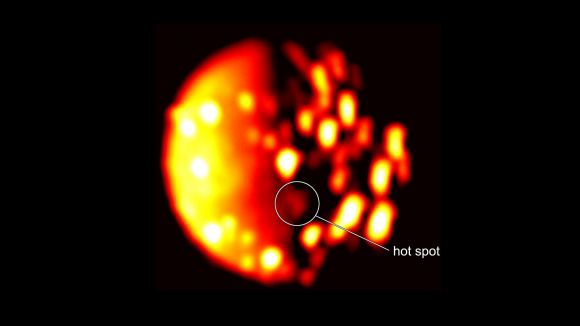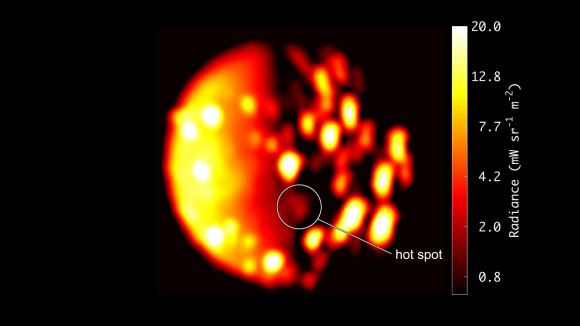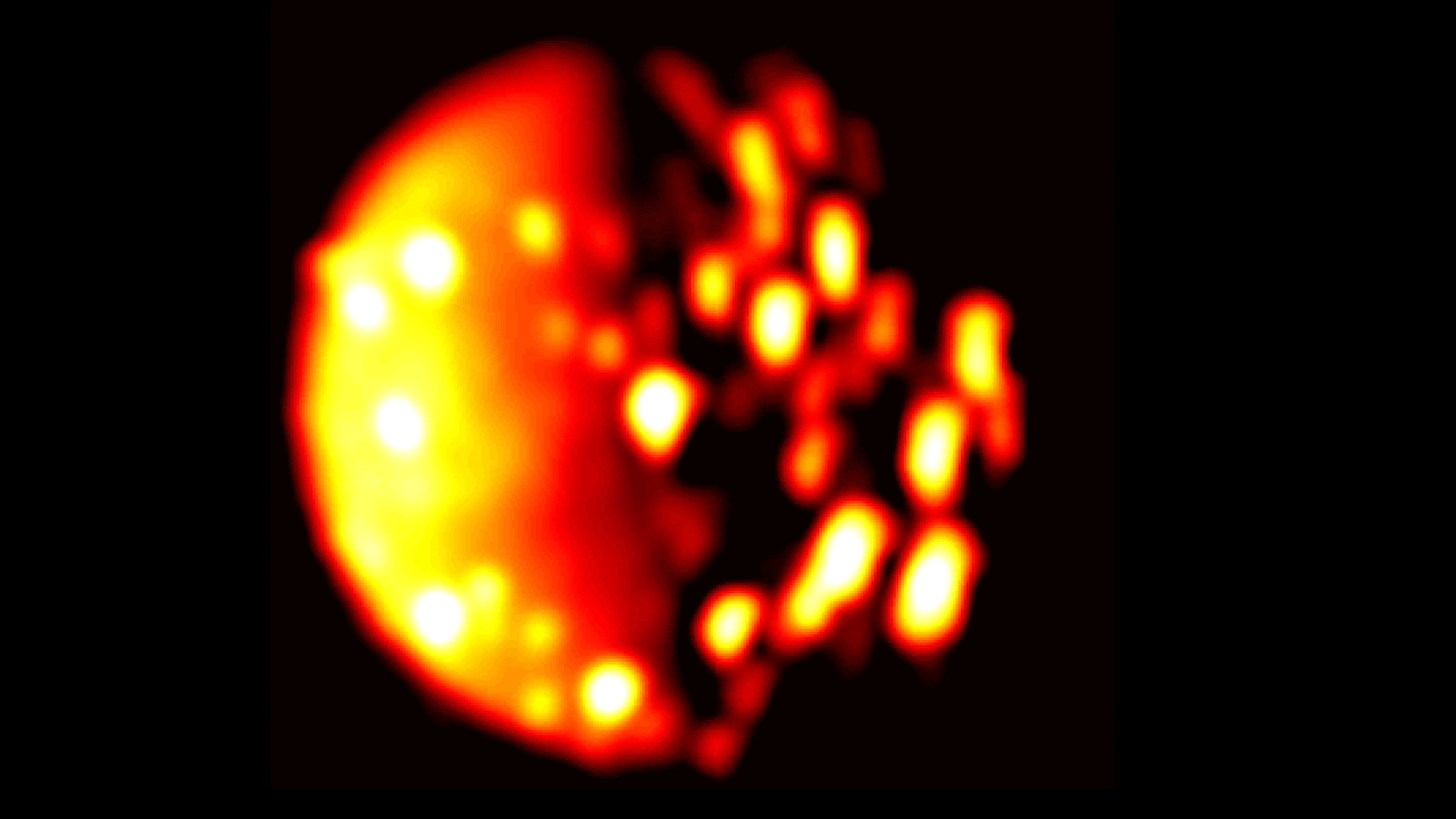When the Juno spacecraft arrived in orbit around Jupiter in 2016, it became the second spacecraft in history to study Jupiter directly – the first being the Galileo probe, which orbited Jupiter between 1995 and 2003. With every passing orbit (known as a perijove, which take place every 53 days), the spacecraft has revealed more about Jupiter’s atmosphere, weather patterns, and magnetic environment.
In addition, Juno recently discovered something interesting about Jupiter’s closest orbiting moon Io. Based on data collected by its Jovian InfraRed Auroral Mapper (JIRAM) instrument, Juno detected a new heat source close to the south pole of Io that could indicate the presence of a previously undiscovered volcano. This is just the latest discovery made by the probe during its mission, which NASA recently extended to 2021.

The infrared data was collected on Dec. 16th, 2017, when the Juno spacecraft was about 470,000 km (290,000 mi) away from Io. As Alessandro Mura, a Juno co-investigator from the National Institute for Astrophysics (INAF) in Rome, explained in a recent NASA press release:
“The new Io hotspot JIRAM picked up is about 200 miles (300 kilometers) from the nearest previously mapped hotspot. We are not ruling out movement or modification of a previously discovered hot spot, but it is difficult to imagine one could travel such a distance and still be considered the same feature.”
Aside from Juno and Galileo, many NASA missions have visited or passed through the Jovian System in the past few decades. These have including the Pioneer 10 and 11 missions in 1973/74, the Voyager 1 and 2 missions in 1979, and the Cassini and New Horizons missions in 2000 and 2007, respectively. Each of these missions managed to snap pictures of the Jovians moons on their way to the outer Solar System.

Combined with ground-based observations, scientists have accounted for over 150 volcanoes on the surface of Io so far, with estimates claiming there could over 400 in total. Since it entered Jupiter’s orbit on July 4th, 2016, the Juno probe has traveled nearly 235 million km (146 million mi) from one pole to other. On July 16th, Juno will conduct its 13th perijove maneuver, once again passing low over Jupiter’s cloud tops at a distance of about 3,400 km (2,100 mi).
During these flybys, Juno probes beneath the upper atmosphere to study the planet’s auroras to learn more about it’s structure, atmosphere and magnetosphere. By shedding light on these characteristics, the Juno probe will also teach us more about the planet’s origins and evolution. This in turn will teach scientists a great deal more about the formation and evolution of our Solar System, and perhaps how life began here.
Further Reading: NASA

